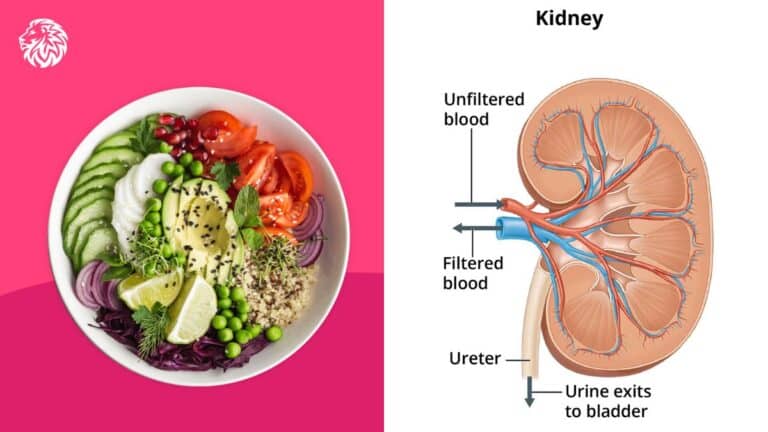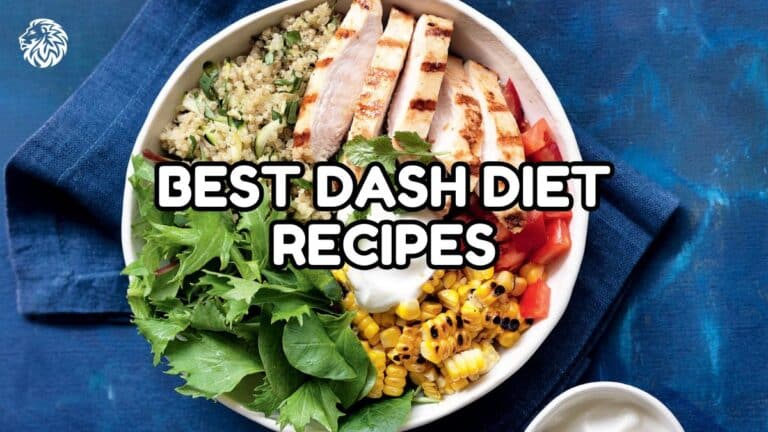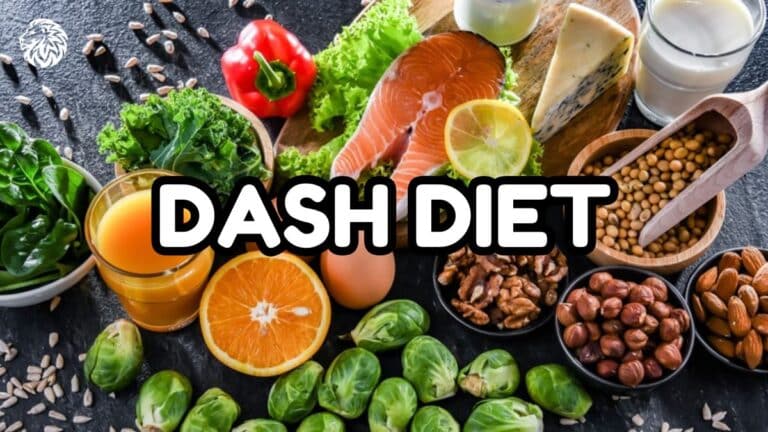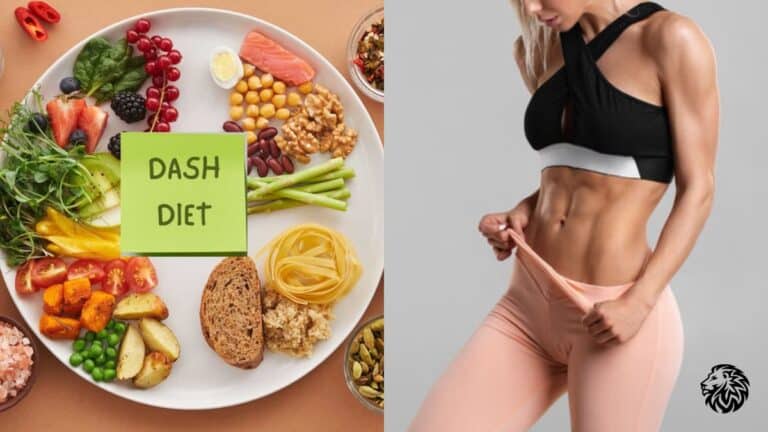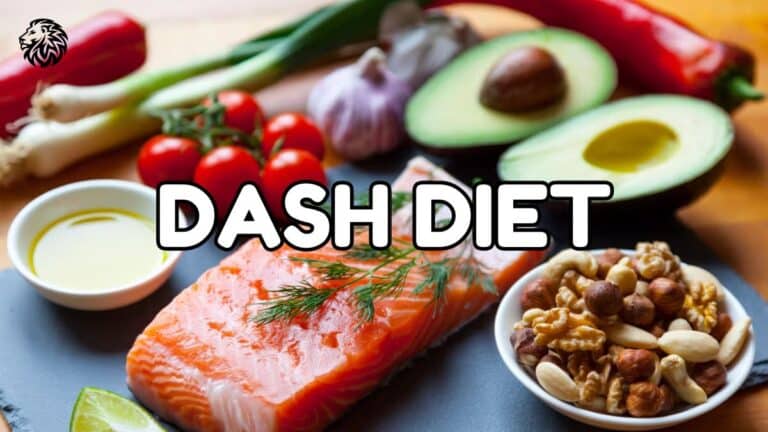High blood pressure, or hypertension, is a common health issue affecting millions of people worldwide. While medication is often prescribed to manage blood pressure, diet plays an equally important role in controlling it. One of the most effective dietary approaches for lowering blood pressure is the DASH diet (Dietary Approaches to Stop Hypertension). This science-backed diet focuses on healthy, balanced eating and has been shown to significantly reduce high blood pressure, often within just a few weeks.
In this blog post, we’ll explore how the DASH diet lowers blood pressure and why it’s become such a trusted solution for those looking to improve their cardiovascular health.
What is the DASH Diet?
The DASH diet was specifically designed to combat high blood pressure. It emphasizes a diet rich in fruits, vegetables, whole grains, lean proteins, and low-fat dairy while minimizing sodium, red meat, and added sugars. Unlike other restrictive diets, DASH encourages a wide variety of food groups to ensure that you get all the nutrients your body needs.
The diet focuses on heart-healthy nutrients such as potassium, calcium, and magnesium, which play vital roles in regulating blood pressure. By following the DASH diet, individuals can not only lower their blood pressure but also improve their overall well-being.
The Role of Sodium in Blood Pressure
Before diving into the specifics of the DASH diet, it’s important to understand the relationship between sodium and blood pressure. Sodium, found in salt, can cause the body to retain water, which increases the volume of blood in your arteries. This puts more pressure on artery walls, resulting in high blood pressure.
One of the key reasons the DASH diet works so well is because it limits sodium intake. The standard DASH diet suggests consuming no more than 2,300 milligrams of sodium per day (the equivalent of about one teaspoon of salt). However, for even greater blood pressure reduction, there’s a lower-sodium version of the diet that caps sodium at 1,500 milligrams per day.
How the DASH Diet Lowers Blood Pressure
The DASH diet’s ability to lower blood pressure stems from its focus on specific nutrients and balanced eating. Here’s how it works:
1. Increased Potassium Intake
Potassium is a critical mineral that helps balance the effects of sodium in the body. It works by relaxing blood vessels and helping the body flush out excess sodium through urine. This reduction in sodium helps lower blood pressure. The DASH diet emphasizes potassium-rich foods like:
- Bananas
- Sweet potatoes
- Spinach
- Beans
- Tomatoes
- Oranges
By consuming more of these foods, individuals on the DASH diet can help reduce their blood pressure naturally.
2. Boosting Magnesium
Magnesium plays a significant role in regulating blood pressure by relaxing blood vessels. It also helps with the production of nitric oxide, which dilates blood vessels and improves circulation. Many people do not get enough magnesium in their daily diets, but the DASH diet helps correct this by encouraging the consumption of:
- Leafy green vegetables
- Nuts and seeds
- Whole grains
- Avocados
- Fish
These foods are excellent sources of magnesium, which can contribute to lower blood pressure over time.
3. Calcium for Heart Health
Calcium is essential for maintaining heart health and proper muscle function, including the muscles in your blood vessels. Adequate calcium intake helps ensure that blood vessels can contract and relax properly, which in turn regulates blood pressure. The DASH diet promotes calcium-rich, low-fat dairy products such as:
- Skim milk
- Yogurt
- Low-fat cheese
In addition, leafy greens and fortified plant-based milk are also great non-dairy sources of calcium.
4. Fiber from Fruits and Vegetables
Fiber is another key element in the DASH diet, particularly from fruits, vegetables, and whole grains. A diet rich in fiber can help reduce cholesterol levels, improve digestion, and stabilize blood sugar—all factors that contribute to healthy blood pressure. High-fiber foods that are central to the DASH diet include:
- Apples
- Berries
- Lentils
- Oats
- Broccoli
- Carrots
These foods help maintain a healthy heart by reducing the strain on your blood vessels and improving circulation.
Why Balanced Eating Matters
One of the biggest strengths of the DASH diet is its emphasis on balance. Rather than focusing on eliminating entire food groups, the diet promotes a wide variety of nutrient-rich foods that contribute to overall health. It ensures that you get all the vitamins, minerals, and other nutrients you need to support cardiovascular health.
In contrast to some fad diets, which may result in short-term weight loss but offer little long-term benefit, the DASH diet is sustainable and encourages lifelong healthy eating habits. Many of the foods in the diet are naturally low in sodium, and the emphasis on fruits, vegetables, and whole grains makes it easier to stay within recommended sodium limits.
Additional Benefits Beyond Blood Pressure
While the primary goal of the DASH diet is to lower blood pressure, it offers many additional health benefits. People following the diet often experience:
- Improved cholesterol levels: The diet’s focus on healthy fats, fiber, and nutrient-dense foods helps lower LDL (bad) cholesterol, which is another risk factor for heart disease.
- Better weight management: The DASH diet encourages portion control and nutritious, filling foods, which can help with weight loss or maintenance. Losing excess weight is also linked to lower blood pressure.
- Reduced risk of chronic diseases: Studies show that following the DASH diet can lower the risk of other chronic diseases, such as type 2 diabetes and certain types of cancer.
Tips for Success on the DASH Diet
Here are some practical tips for making the DASH diet work for you:
- Plan your meals ahead of time: Preparing meals in advance can help you stick to the DASH diet, ensuring you have healthy options on hand and reducing the temptation to grab high-sodium, processed foods.
- Read labels carefully: Be aware of hidden sodium in processed and packaged foods. Opt for fresh, whole foods as much as possible.
- Increase physical activity: While diet plays a major role in blood pressure management, incorporating regular exercise will enhance the effects of the DASH diet and improve your overall health.
- Stay hydrated: Drinking plenty of water helps maintain healthy circulation and assists in flushing out excess sodium.
Conclusion: The DASH Diet as a Proven Tool for Lowering Blood Pressure
The DASH diet remains one of the most effective and sustainable approaches to lowering blood pressure. By focusing on foods that are rich in potassium, magnesium, calcium, and fiber—and by limiting sodium—it helps regulate blood pressure naturally. The DASH diet promotes heart health in the long run, reducing the risk of heart disease and other chronic conditions.
If you’re looking for a natural way to lower your blood pressure, adopting the DASH diet is a great place to start. It’s easy to follow, full of delicious options, and can offer lasting health benefits with simple dietary changes.
References
- Mayo Clinic. (2023). DASH diet: Healthy eating to lower your blood pressure. https://www.mayoclinic.org/healthy-lifestyle/nutrition-and-healthy-eating/in-depth/dash-diet
- MedlinePlus. (2023). DASH diet to lower high blood pressure. U.S. National Library of Medicine. https://medlineplus.gov/ency/patientinstructions/000770.htm
- National Center for Biotechnology Information. (2018). DASH diet. In Managing overweight and obesity in adults: Systematic evidence review from the obesity expert panel, 2013. https://www.ncbi.nlm.nih.gov/books/NBK482514/
- National Heart, Lung, and Blood Institute. (2006). Your guide to lowering your blood pressure with DASH. U.S. Department of Health and Human Services. https://www.nhlbi.nih.gov/files/docs/public/heart/new_dash.pdf

